
Travel is an inexhaustible source of pleasure and discovery. As soon as we return from a destination, we are happy to share our new experiences and adventures. But when we came back from South Korea, it was different.
We wanted to come back to our experience through anecdotes and stories to tell you about our experience. However, we think it is important to make it clear that our opinion should not be generalized, as South Korea is a destination that will please and displease. This is a subjective and completely personal opinion.
Preamble of a trip to South Korea
In May 2015 we decided to discover South Korea. A trip that was part of a return to Japan. Knowing already the land of the rising sun, we wanted to spice up this new getaway by discovering a country that we did not know. We then turned our attention to South Korea, after having heard good feedback on that country.
For several months we tried to collect information about the country. Korea is still a relatively little-known destination with relatively little information on the subject except on the capital and Jeju. We quickly find the list of sites not to be missed, but finally little to understand the culture and history of the country (which we will miss later). We had also contacted the South Korean Tourist Office, which had sent us a large envelope with lots of brochures. The photos on these brochures were very beautiful, blowing beautiful landscapes. We had a real crush and we were looking forward to discovering South Korea.
It is therefore a beautiful morning in May that we land at Seoul Incheon airport with our guide in hand. Several months earlier, we had identified all the curiosities to see. South Korea is not a big country, so we decided to stay there for 10 days while driving around the country, making a "Z".
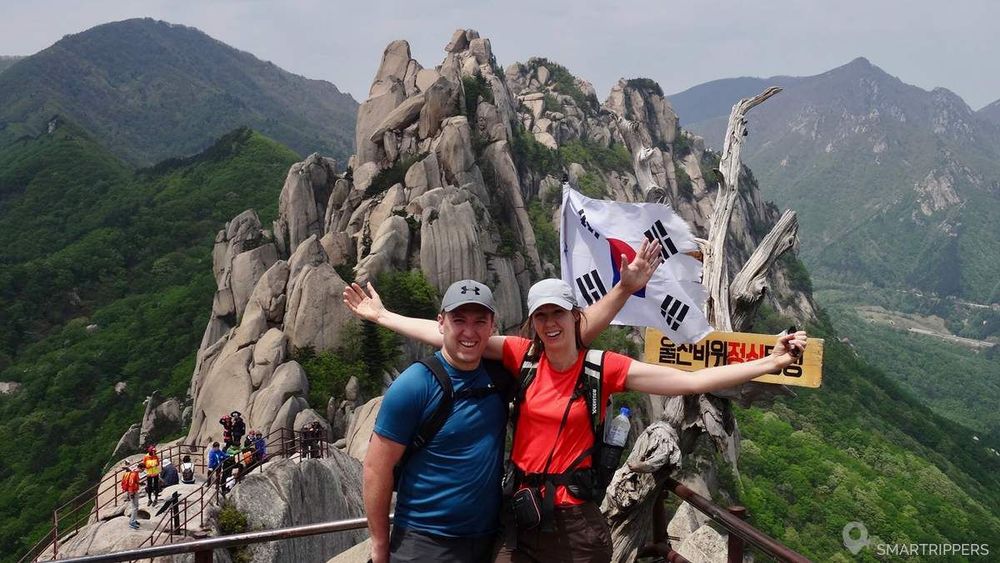
We had planned to discover Seoul for 2 days, then we had to join Sokcho on the east coast to hike in Seoraksan Park. We would then drive back to the centre of the country via Donghae, Hahoe and Andong before heading to the Haiensa Temple. We had planned to stay in small villages, in the inhabitants' homes, in order to better discover Korean culture. Our route would then continue south of the island to discover the famous Boseong tea plantation, the folk village of Naganeupseong or Namhae Island. Finally, we had to end with a walk in Busan before taking a ferry to Japan.
We had chosen not to go to Jeju because of lack of time. Maybe we should have?
Immersion in Seoul and first impressions
Arriving in Seoul, we started to discover the Korean capital by strolling through the streets after dark. That evening, we didn't meet many people, the streets were rather deserted and yet we were on a Friday night. We then searched for several hours for the lively districts of the city, without finding them. Maybe we weren't in the right places? Yet a few streets seemed to be warm with their big luminous signs, but unfortunately deserted that night.
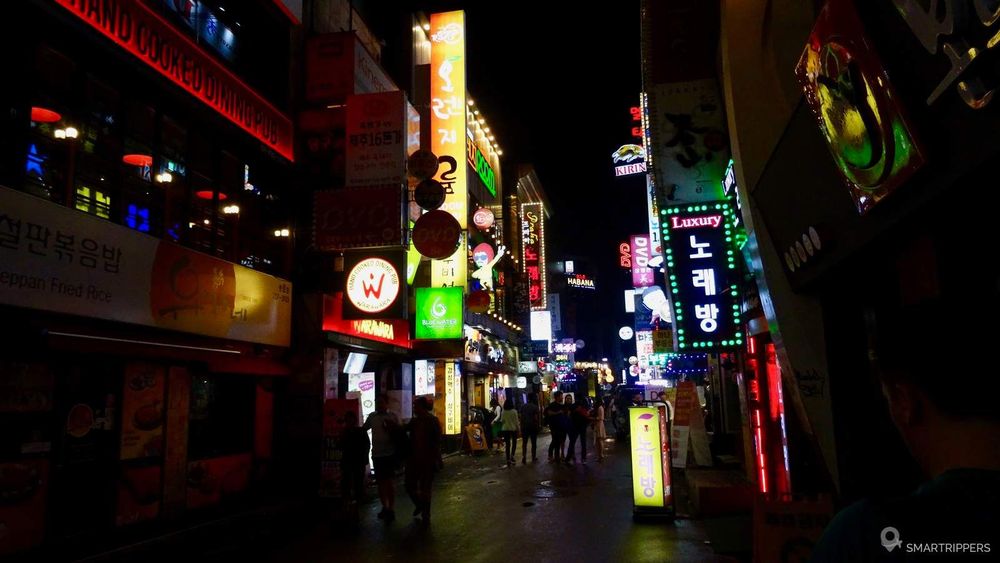
To reach our hotel in the northern districts of Seoul, we had to walk through dark and deserted lanes. In some places, light escaped from the back of restaurants cleaning their kitchens.
The garbage was packed in big garbage bags and then dropped off at every corner of the street, sometimes leaving them to a few dogs who would come to the pass until the early morning. This is not surprising for some Asian countries, but we did not expect to see this in Seoul, which is meant to be a dynamic and modern city. Perhaps we came to visit Seoul at the wrong time? On the other hand, all the other cities we passed through in Korea were clean and the waste was placed in containers.
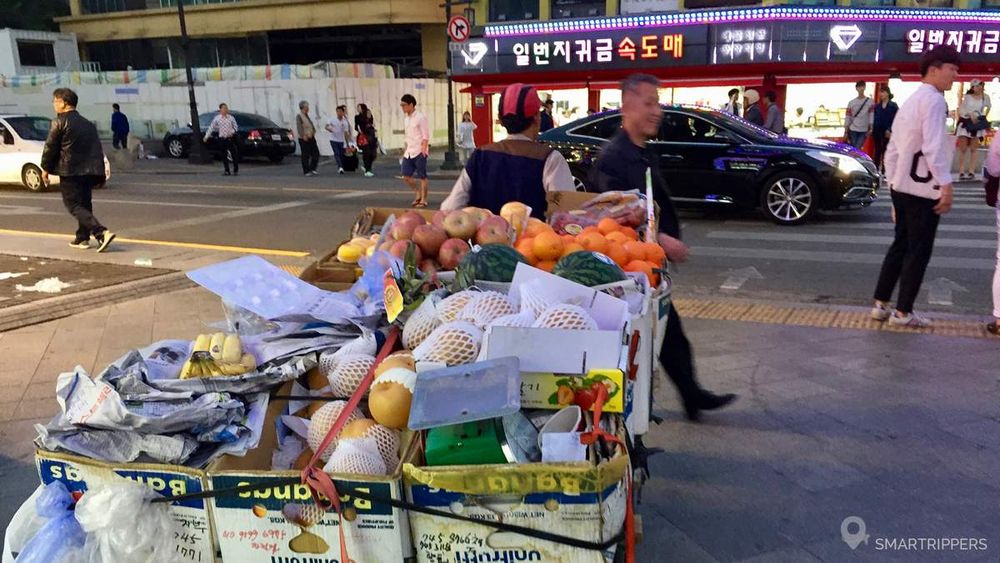
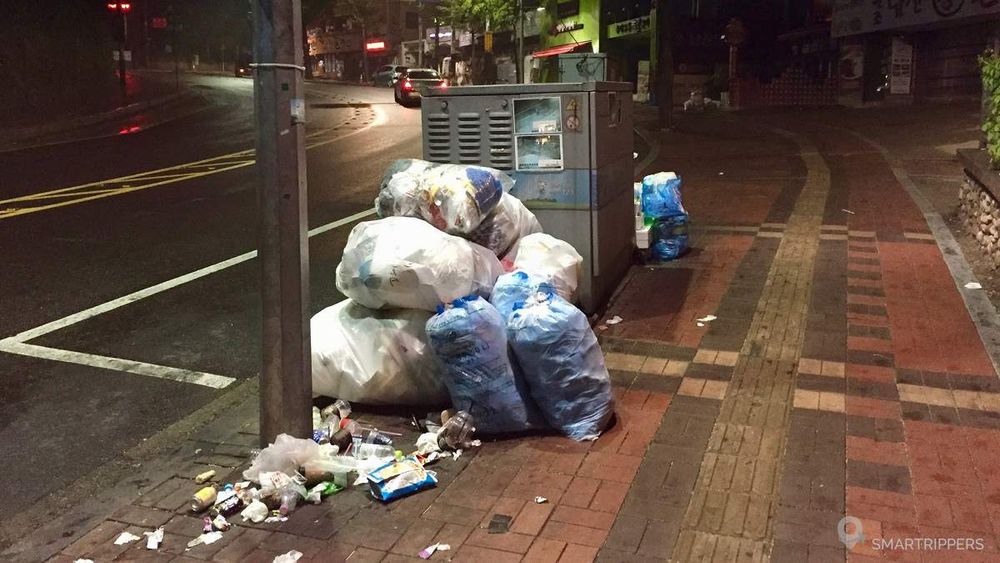
Even if not all the districts of Seoul are like this, we decidedly didn't appreciate our night walks in the capital, except along the Cheonggyecheon river where the walk was very pleasant, or the ascent to the Seoul Tower on foot.
Between modernity and disillusionment
This image we discovered of Seoul contrasted with the idea that we were doing it, probably wrongly, in comparison with the Japan we know. South Korea was still a developing country a few decades ago.
Even if technology seems to appear to be invading the streets, we felt a profound gap between the apparent modernity (cars, computers, road infrastructure) and the sanitary conditions that we still felt very precarious.
Temples and palaces in series
On the first day of our visit to Seoul, we began our visit with the Changdeokgung Palace. The discovery of these places was very interesting. The architecture is pretty with beautiful floral motifs painted on the beams. We admire, we photograph, intrigued by this new decor even if everything seems rather new or at least recently painted. Then we go to the Gyeongbokgung Palace. Strangely enough, behind its massive large door we find again this same architecture, almost identical. The same flowers are painted on the roofs with the same colours. Even if the buildings do not have the same shapes and some of them are in a very photogenic setting, we have the impression of a kind of déjà vu.
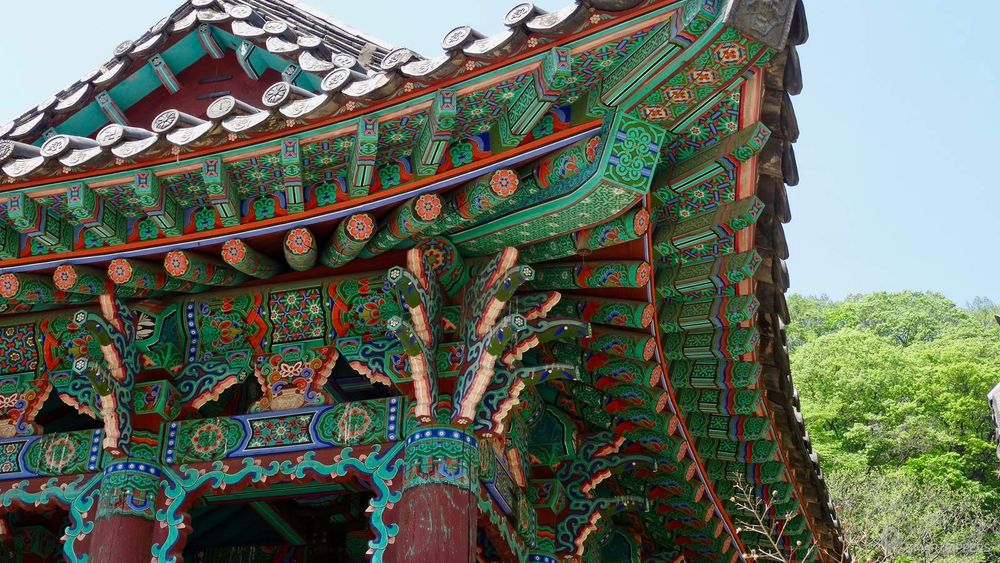
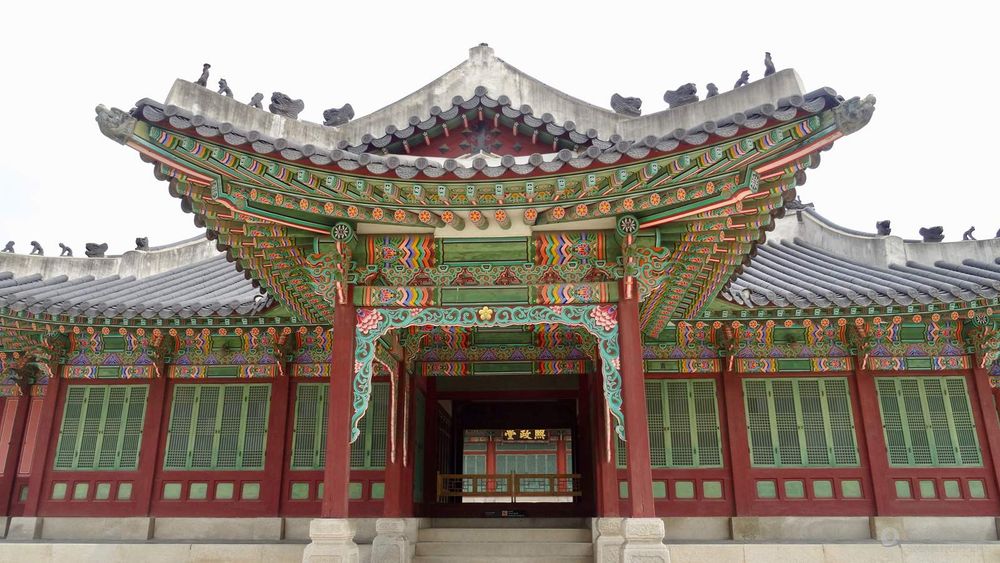
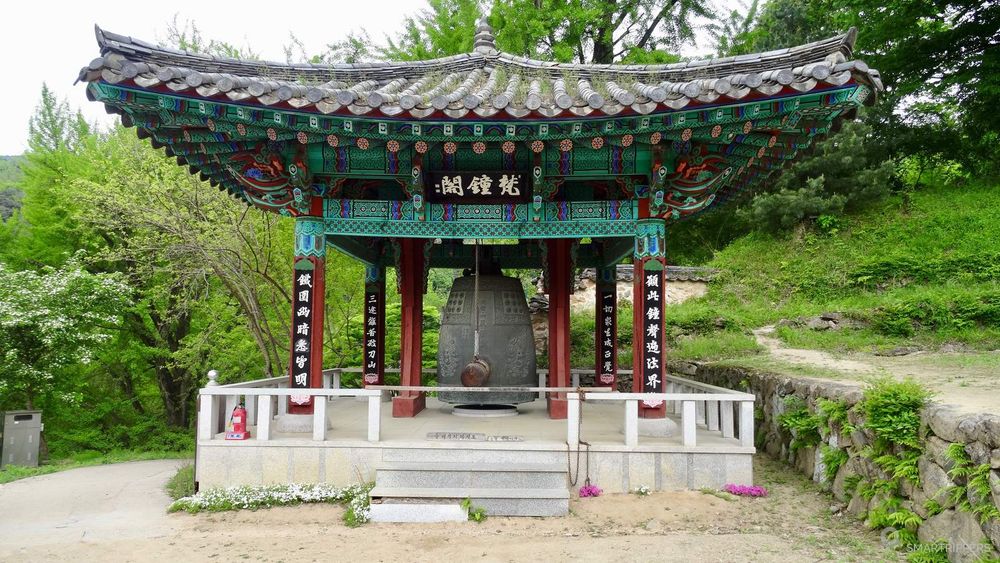
Further on, at the Deoksugung Palace the same scene is played again. We find again these forms, these flowers, this painting that looks so fresh. Over the course of time, weariness has become more and more common in Korean architecture. This does not only concern palaces, but also temples. You will find exactly the same mouldings and patterns. Certainly some facades are different, but everything looks new and similar, redone to perfection.
Later we will learn that it is the Dancheong, a traditional Korean style of decoration characterized by specific patterns and colors, which explains why the same decorations are found everywhere.
Reenactments not always accurate
It was well known that South Korea suffered heavy damage during the war and that all the original infrastructure was destroyed. However, we quickly learn that the reconstructions were not, on the whole, faithful to the original plans. Although the main characteristics of the buildings were respected, some modifications were made, such as the removal of one floor and the relocation of some openings, thus making the buildings more "classical". This is not unique to Seoul as we will find the same architecture throughout the country.
After a few days, the pretty flowers drawn on the beams look very bland. Fortunately, some of the complexes have been spared in the most remote areas such as Haiensa, Seoraksan or the Boriam temple in Namhae, where we found the little bit of authenticity that we were missing so much.
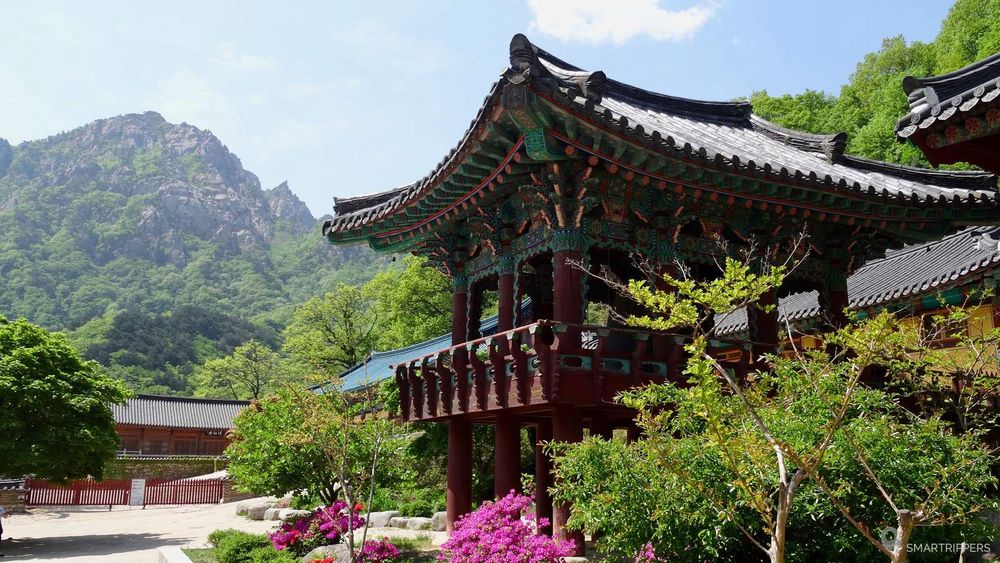
What we missed
Soon we realized that we did not have enough information to understand Korean culture. On the spot we tried to look for information on the internet at night. It was at this time that we understood the extent of the damage caused by the war, whose scar is still largely visible. We probably wouldn't have felt the same way if we were prepared.
1Road infrastructure and ecological disasters
Over the days we have been driving a lot and if there is one thing to remember from South Korea, it is the quality of the road network. The roads are beautiful, new and well maintained. But soon enough, however, we realize that the natural landscapes are not preserved, to the detriment of highways, viaducts, tunnels that do not fit in well with the wild landscape.
The majority of the country is very mountainous, here not high mountains but large wooded hills. Rather than bothering to bypass the mountains the roads are straight. It is well understood that infrastructure must allow the country to develop, but we have seen this phenomenon almost everywhere, with a few exceptions in the centre of the country where some small roads still cross the passes, thus preserving beautiful landscapes. But for how much longer?
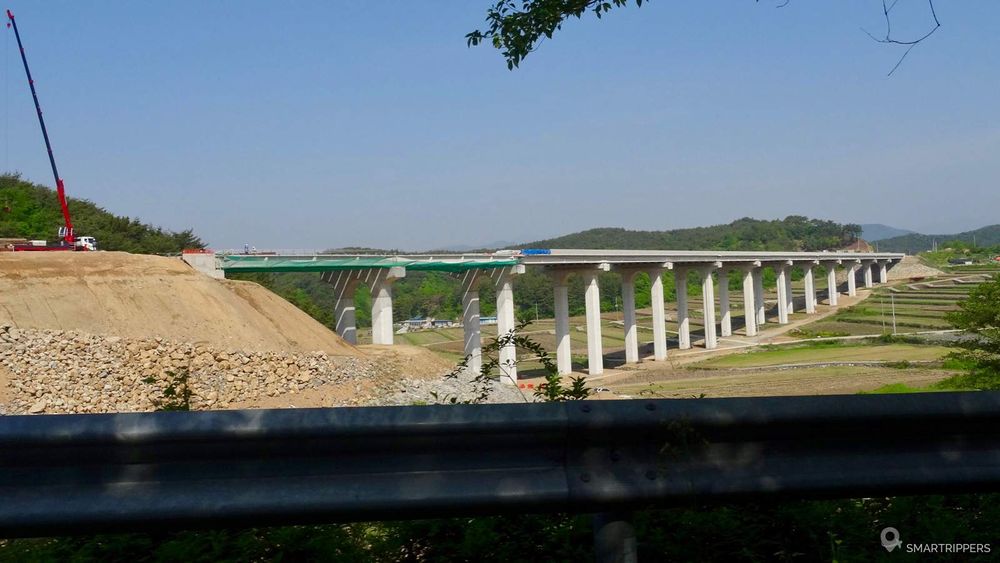
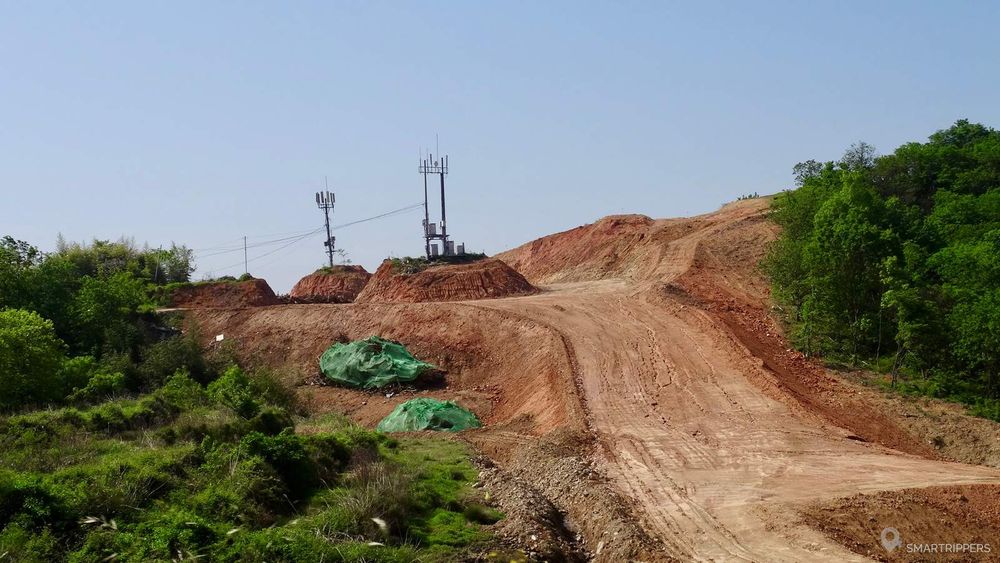
More generally, motorways and secondary roads pass under the mountains and cross the valleys on huge viaducts. It's very practical to connect the country from one end to the other in a few hours, but here we seem to forget the "nature" and "ecological" side. In 2015, we saw a lot of work in progress, as the country wanted to improve its road infrastructure in the run-up to the Olympic Games.
Goodbye beautiful steep coast
What struck us the most was to find beautiful coastal landscapes in the south of the country ravaged by the arrival of a road coming to settle in the middle of the scenery without taking the time to respect the shape of the land. The beautiful sea view is over, now a beautiful viaduct will spoil the view.
The charm of Korean cities
If you are coming to South Korea, it is certainly not to discover the charm of the cities! At least you're warned because it may come as a surprise. In South Korea, the constraints of the terrain (always these same wooded hills) force the development of the cities in height, as they can no longer spread out. Thus, in the face of the strong demographic increase in a small country, Koreans are adapting by building huge numbered towers to accommodate families.
The buildings are tall and usually grouped into large groups of identical buildings. Here the vis à vis is necessary, the proximity with the neighborhood is immediate.
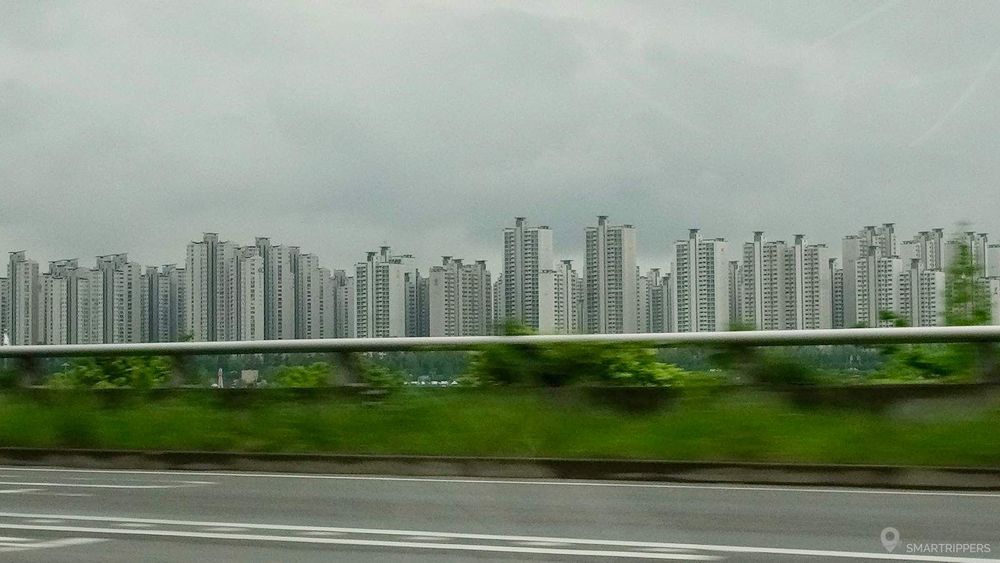
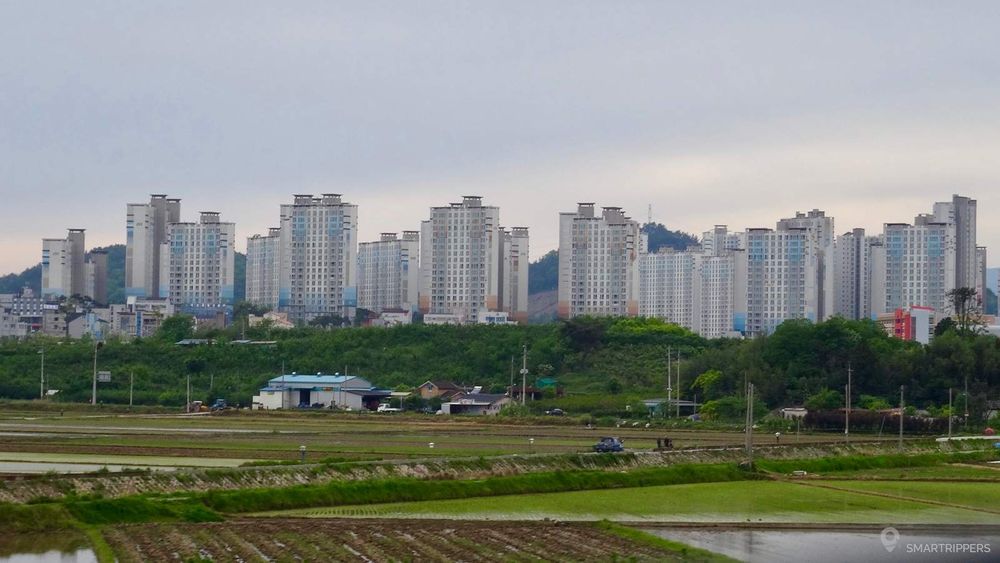
The lack of space being a real problem in South Korea, the cities are slowly eating away at the nearby mountains. We were surprised to see whole sections of mountain razed and cleared to build new large projects in Yeosu, in the south of the country. Sometimes, it is also the shoreline that is trimmed to allow for the development of new constructions.
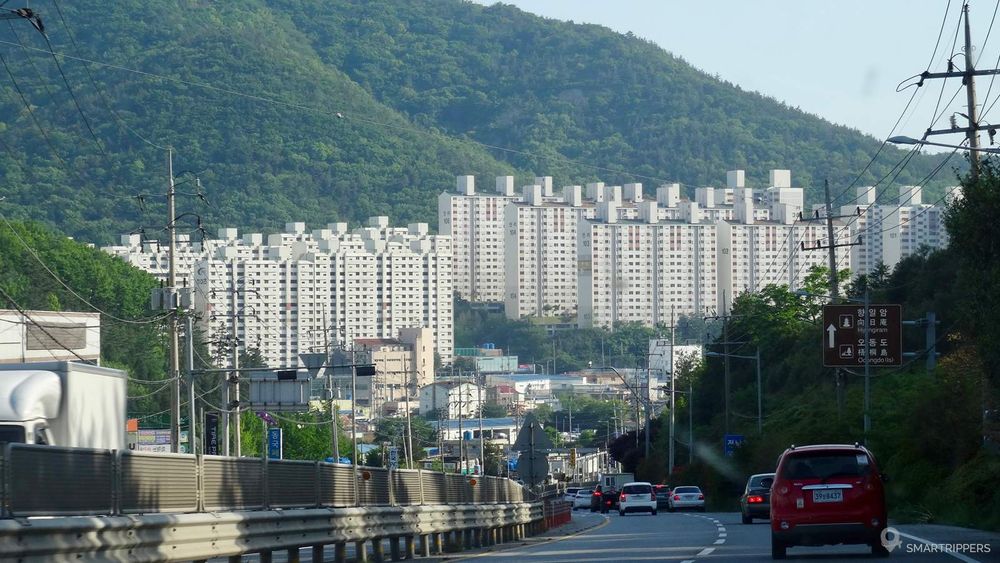
As the country is mountainous, the entire population is concentrated in large conurbations. It is not uncommon to see large buildings even in the heart of the mountains, as soon as the terrain is favourable, even if there are many small villages whose population usually lives off the local agriculture.
From concrete to the sea
So when we arrived in the south of the country, we expected to discover small towns on the seaside, especially since the coast is very steep. What a shock when we discovered bars of buildings right on the beach. Not a centimetre wasn't concrete. The image we had of it was simply the antipodes of what we discovered.
We can say that the industrial cities are ugly, even if we still liked Sokcho and its fishing port and more generally the East Coast cities. Fortunately, there are even charming corners of the city that stay away from the cities.
Korean food
We are now approaching a subject that will probably be controversial, but we have to admit that our experience with Korean food has unfortunately not been a pleasurable one.
Before our departure we had heard nothing but good about Korean food. "You'll see, it's a real treat! "or" Korean food is one of the best in the world." We were therefore delighted to discover the succulent Korean food we hear so much about.
When we arrived in Seoul, we quickly disillusioned ourselves. The smell coming out of some kitchens cooled us down and we were reluctant to enter the stalls that didn't seem very welcoming. With our "small budget" we were forced to eat local food and we couldn't afford to go to fancy restaurants or grills. On the first evening, we finally found a small restaurant where we had our first meal. Korean-style soups on the menu. It was pretty good, but very spicy. It was the best typical Korean meal we had during our stay.
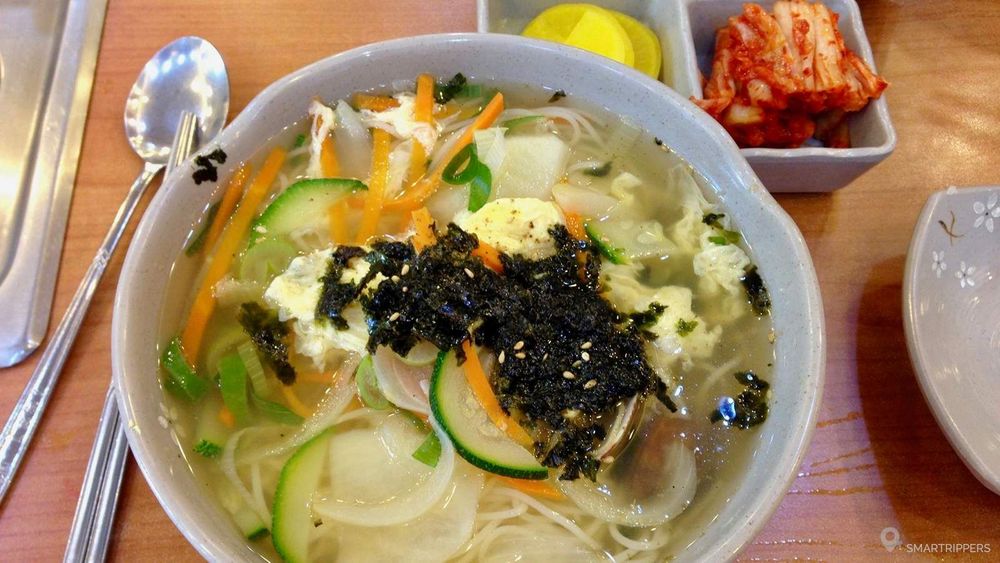
Difficult to find a restaurant
Every lunch and evening we sometimes took more than an hour to find a place to eat. Unfortunately, the "tourist" restaurants were not in our prices. So we tried to find stalls with a few pictures of dishes so that we knew what was waiting for us. Unlike Japan, where it is quite easy to order without speaking Japanese, South Korea is very different. Almost nobody speaks English and the menus are rarely illustrated. On several occasions, we had therefore ordered our dishes without knowing what we were going to find on the plate.
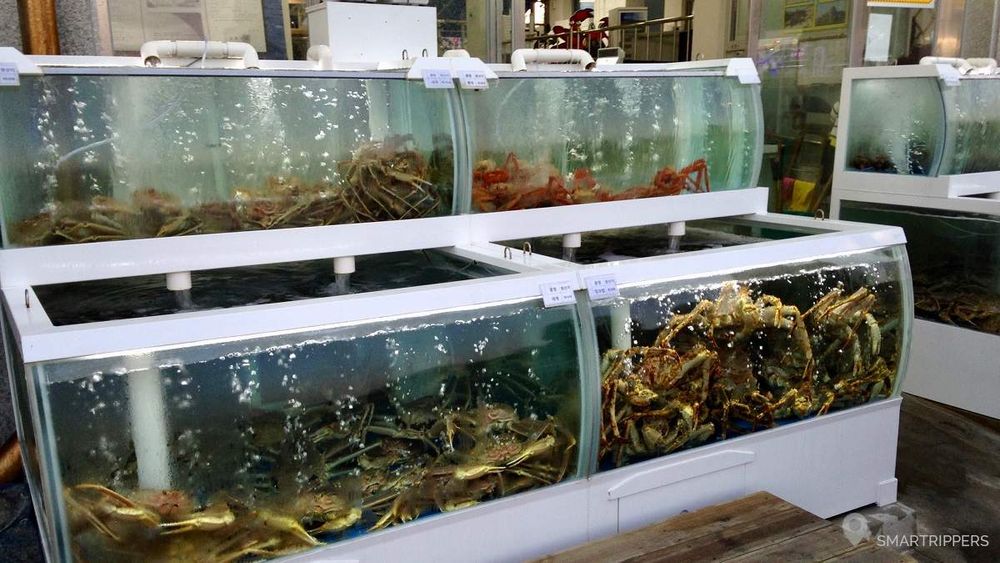
On the seaside, restaurants usually have large aquariums on the front of the house, where the returns from fishing are placed. In Sokcho, for example, we had chosen one of these restaurants at the small port. We thought we ordered fish when the young waitress arrived with a big plate of shellfish!
Soon we understand the principle of Korean cuisine. This one is available in small dishes (between 2 and 9) that accompany a main dish. You will find almost every meal in Kimchi, a Korean speciality made from spiced cabbage. It's quite peculiar and I have to say that we didn't really like it.
Other side dishes often included mushrooms, pickled or dried vegetables, sometimes eggs or fish.
Our strange culinary adventure
One evening, during our stopover in the tiny village of Taejang-ri near Andong, we pushed the door of a small restaurant. From the outside, there is no indication that this is a restaurant. We feel like we're walking into a commonplace house. We dare to push the door and we enter a large room of tatami where there are some tables. There must not be more than 10. The owner of the place looks at us strangely, there shouldn't be many foreign tourists around here!
He invites us to sit down and we are given a written card by hand. Not knowing what to take, a young student who was eating not far from us came to help us. She recommends a local dish "healthy but not tasty". According to her, this is the best choice of the card because it is very good for your health, provided you don't feel it. We decided to follow her advice, a little surprised by what she had just told us. In any case there are only 3 dishes à la carte and according to her we would not have liked the others.
A few moments later, we were brought 9 small ramekins and a pot. The smell that escaped from the latter was indeed really nauseating. We're opening it. Inside, pieces of tofu were mixed with white beans and turnips. We pour the soup into our small bowls. The smell that came out of our bowls really didn't sound appetizing. Then we taste.
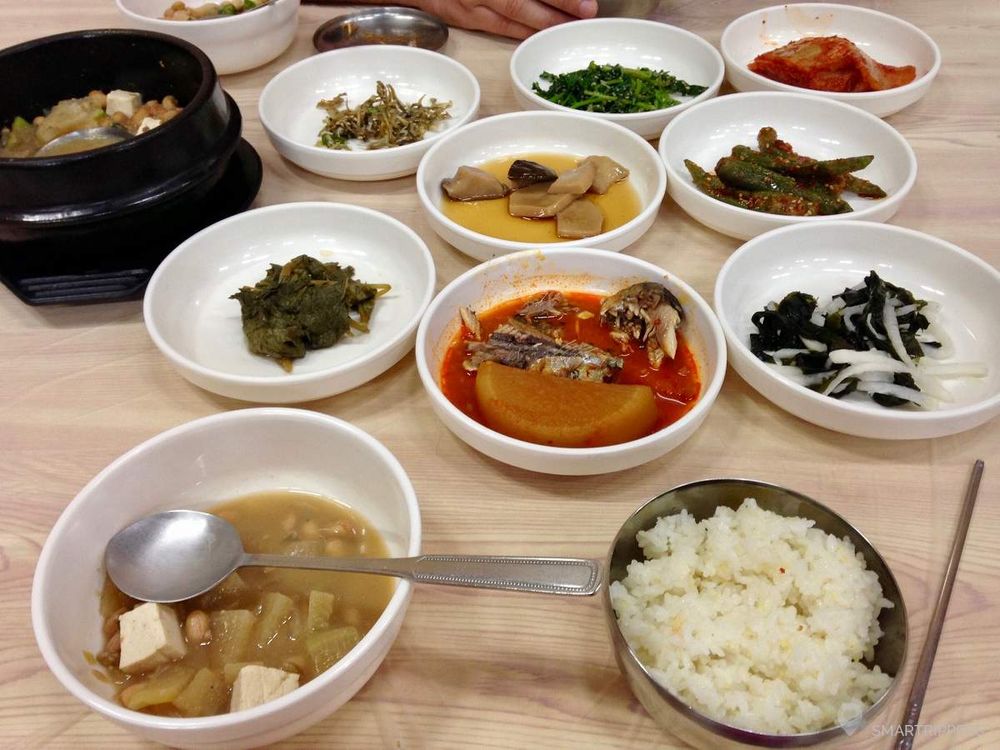
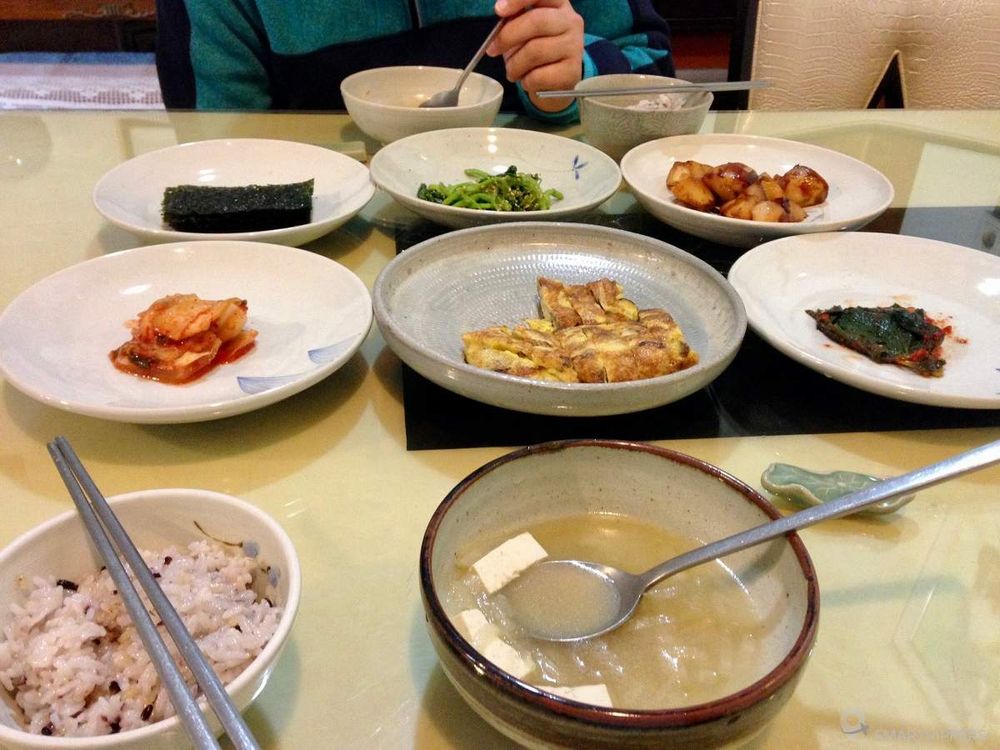
The juice was surprisingly bland in taste and combined with the smell, I let you imagine our feast. I have to say that we have made an effort not to make a face in order not to offend the staff. After a few efforts, we finish our meal and go home.
The next morning, we are about to have breakfast with the family who had been accommodating us. We are very happy to finally have a real breakfast, we are looking forward to the first dishes. After having deposited 6 small ramekins, our hood leaves us a soup tureen. We're looking forward to it, we open it and discover with horror the same soup as the day before, except that this time it's for breakfast! I'll let you imagine our head at 7:00 in the morning.
Time for simplicity
Over the course of our stay, by wiping away unattractive meals, we finally opted for simplicity by shopping in supermarkets. The outcome of our trip to South Korea is very mixed in culinary terms. Even though we tasted some good dishes, we were never really convinced by our taste experiences.
2Review of our trip to South Korea
I still wanted to end this article with a positive note. After all, Korea isn't just ugly cities and temples rebuilt on the chain. We did appreciate some of the discoveries such as the Haiensa Temple, mountain walks, trekking in the Seoraksan, Daehan Dawon (Boseong) tea plantation, the Busan centre and our route on Namhae Island.
We also had nice encounters such as at the Folkloric village of Naganeupseong where a charming lady took care of our costumes, or at the fish restaurant in Shokcho where we chatted with the waitress for more than an hour thanks to Google translation.
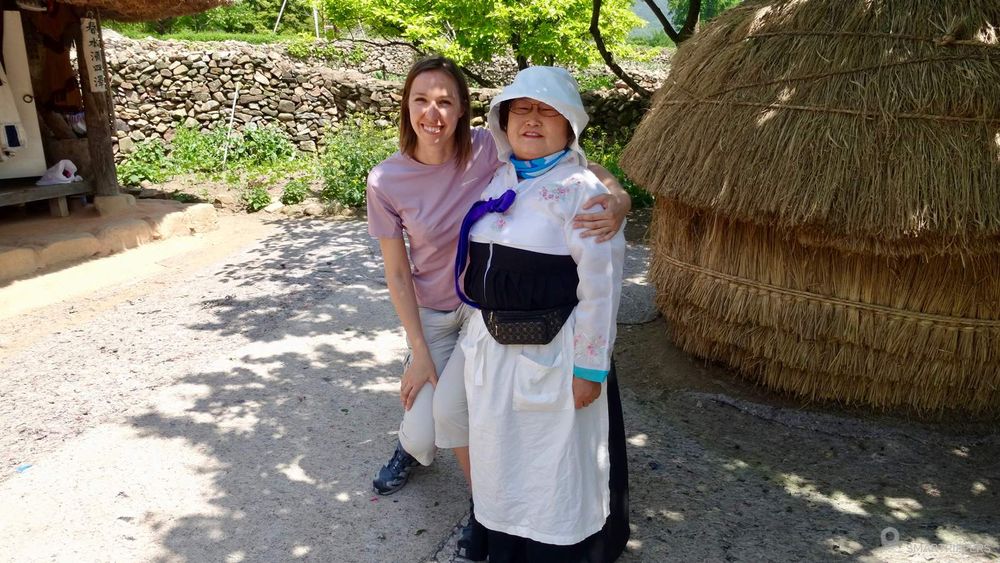
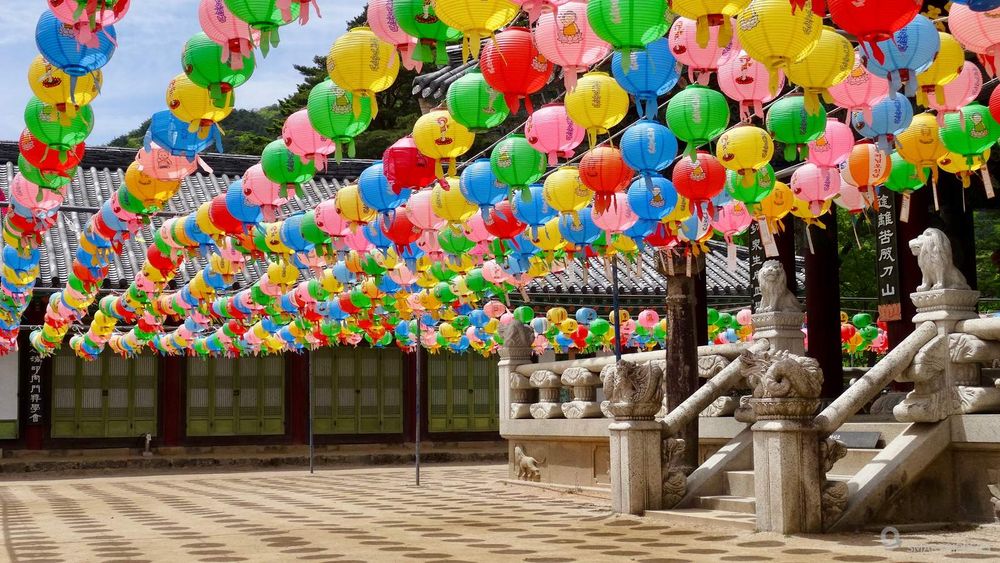
We were disappointed in South Korea because we expected something else. We were very ill-prepared because of a lack of information (which it was difficult to collect before our departure). I also think that our biggest mistake was imagining that South Korea could be similar to Japan. These two countries are very different: culture, architecture, food, lifestyle... It's incomparable.
Japanese influence is felt in Busan, the most eastern of Korean cities. It was the city that we enjoyed the most during our stay. There are lively streets, a young population and Japanese speaking at times.
South Korea will remain for us a rather strange journey, to which we were not prepared in the end. But we keep the opportunity to come back, this time better prepared, to rediscover this country with a new and savvy eye and perhaps this time, to appreciate it!
We are Sandrine and Flo, French thirty-somethings. In 2019 we quit everything to live our dream, become nomads and travel around the world. We left with our baby, Lena, who was only 5 months old at the time. After a first trip around the Pacific Ocean by plane and a long 3 months stay in Hawaii, we left to discover Iceland for 3 months on board our 4WD pickup truck and truck camper. Then we continued our adventure in North America.
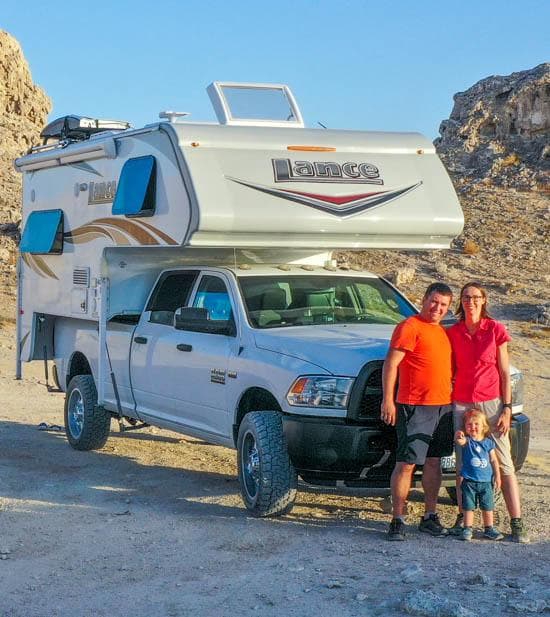
Today, if we can continue this adventure, it is above all thanks to our blog, Smartrippers! We created it one day in 2016, with the desire to share our good travel tips, without thinking that it would lead us there! We have developed it a lot over the years and have become experts on our 3 favorite destinations: Hawaii, Iceland and the American West. We now guide you to these destinations to help you plan the trip of your dreams!
Follow our adventures!